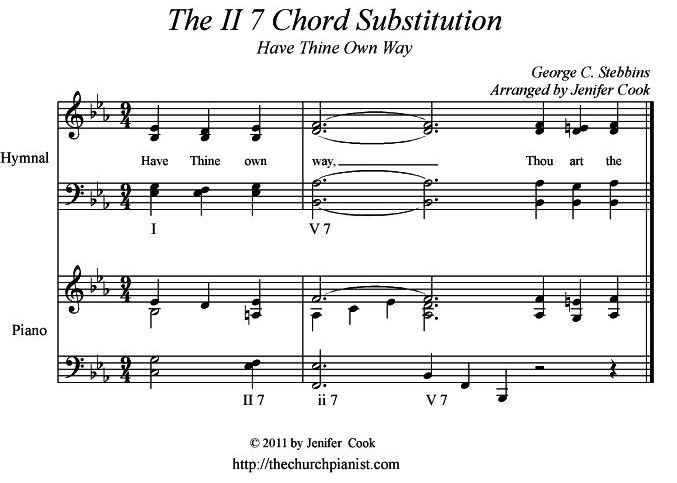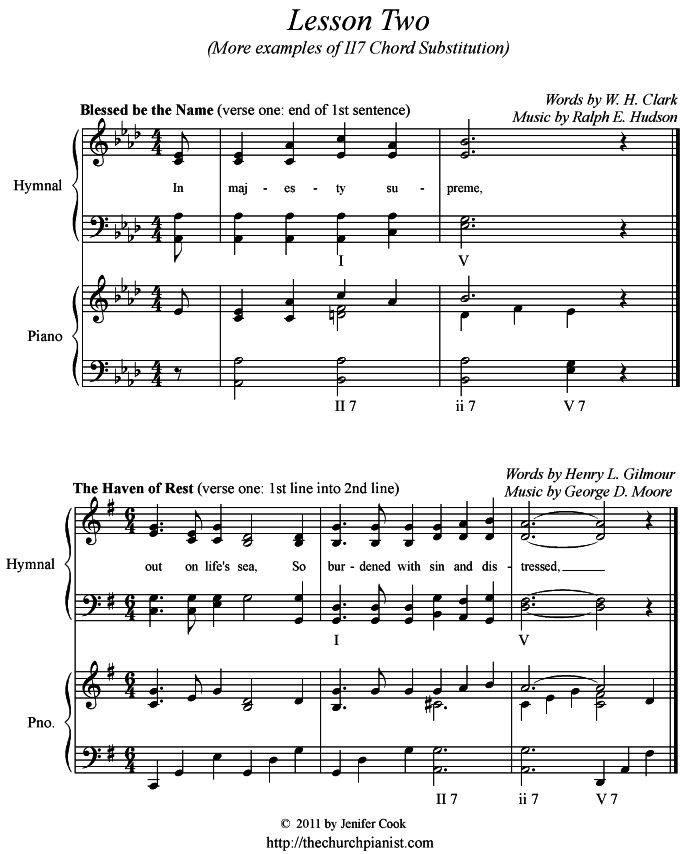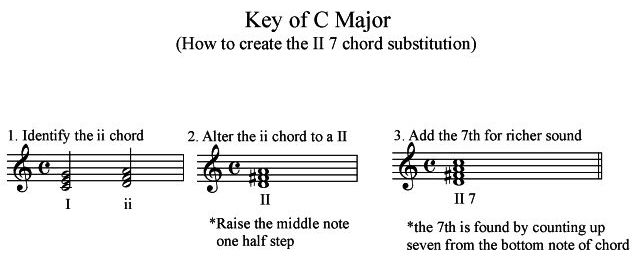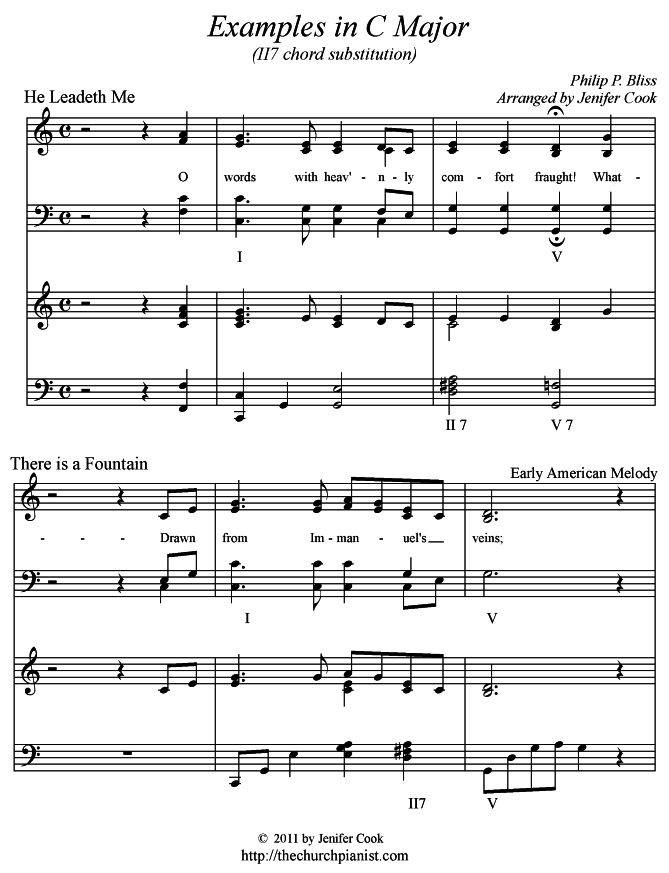Lesson Two: The II 7 Chord Substitution with Have Thine Own Way
Thursday, August 25th, 2011Chord Scenario for this II 7 Chord Substitution:
When a I chord lasts for at least two beats and leads into a V or V 7 chord that lasts 3 or more beats…the II 7 can replace a I chord.
On to our example in Have Thine Own Way in E flat major. Since E flat is the first note in the key of E flat…it is number one. So F is the second note in the key of E flat major. The ii chord would be: F-A flat-C.
Now let’s alter this minor ii chord by making it major. Raise the middle note to A natural. Are you beginning to catch on? You now have the II chord: F-A natural-C See illustration below:
 *I added an E flat (not shown)… on the top of the II chord…making it a II 7 (the E flat is 7 notes from the bottom note (F). Added 7ths make a chord sound SO much richer!
*I added an E flat (not shown)… on the top of the II chord…making it a II 7 (the E flat is 7 notes from the bottom note (F). Added 7ths make a chord sound SO much richer!
*You’ll notice the note members of the II 7 chord in the following excerpt are scrambled between both hands. The note “C” is missing (which is ok)… but the rest are present.
 ~ ~ ~ ~ ~ ~ ~ ~ ~ ~ ~ ~ ~ ~ ~ ~ ~ ~ ~
~ ~ ~ ~ ~ ~ ~ ~ ~ ~ ~ ~ ~ ~ ~ ~ ~ ~ ~
Now…a couple more examples of the II 7 chord substitution in the key of A flat & G Major.
~ ~ ~ ~ ~ ~ ~ ~ ~ ~ ~ ~ ~ ~ ~ ~ ~ ~ ~
Are you wondering how to use the ii 7 chord in each example? Whenever a V or V7 chord is lasting three or more beats…use the ii 7 chord first and then resolve to the written V or V 7 chord. I’ll share examples of this chord substitution in another article. So much to share!
Church Pianist Tip: Remember…chord substitutions can not be used during congregational singing unless they are singing unison. Why? Because the substitution chords will conflict with the voice parts.



